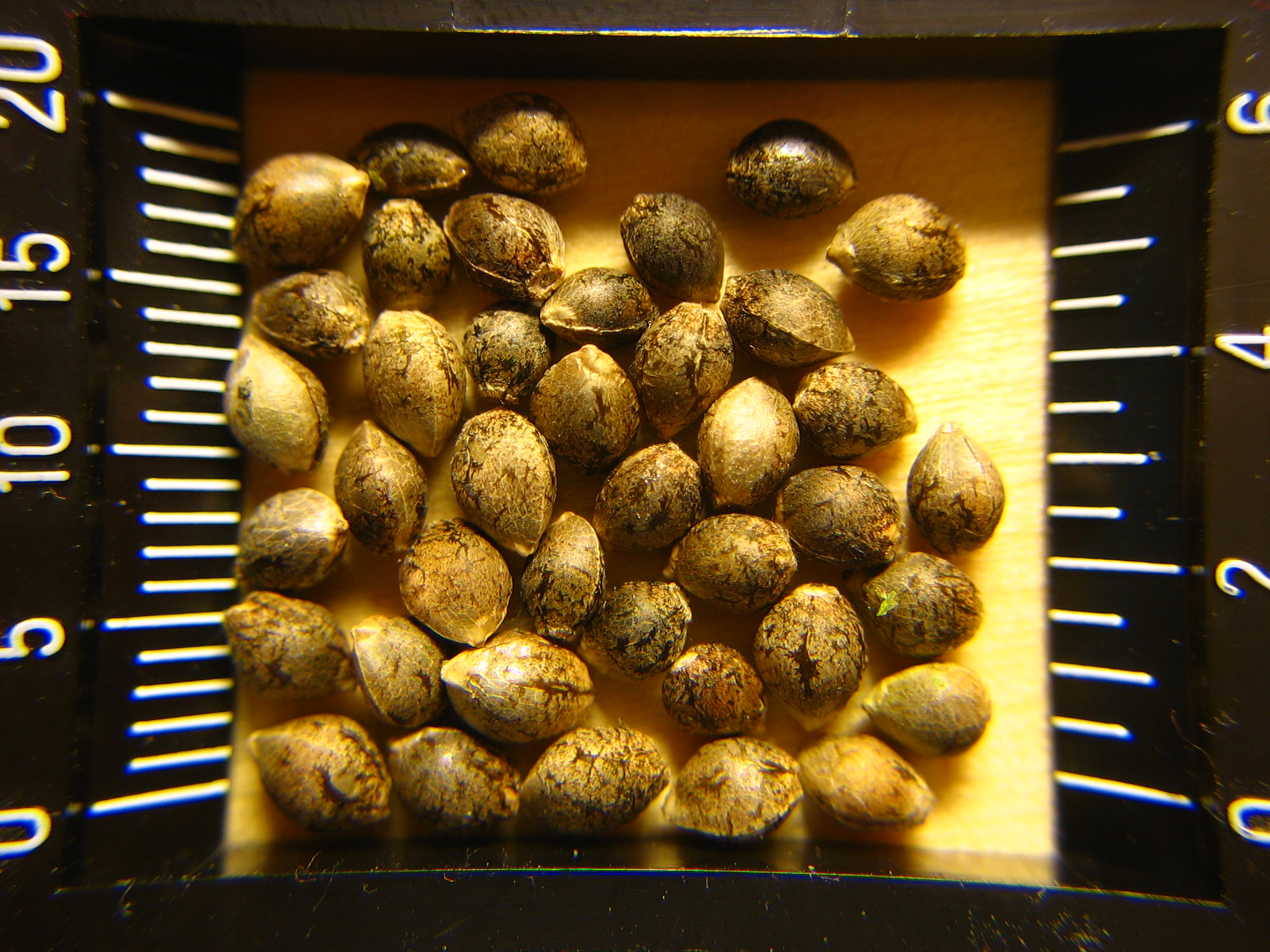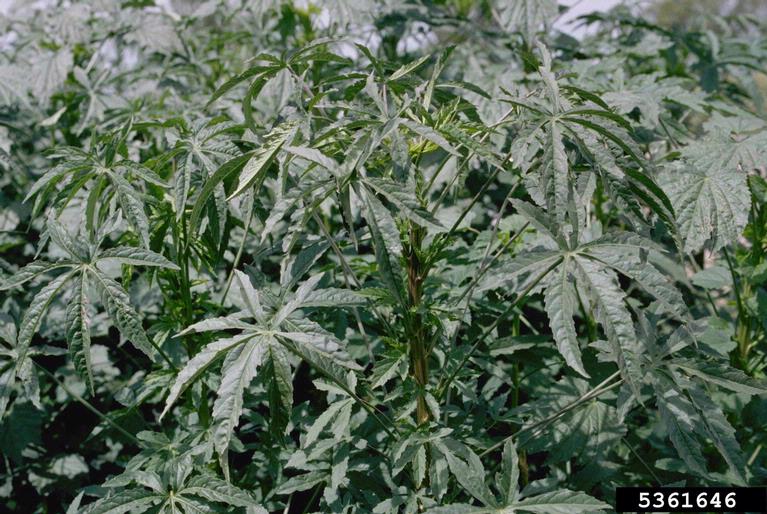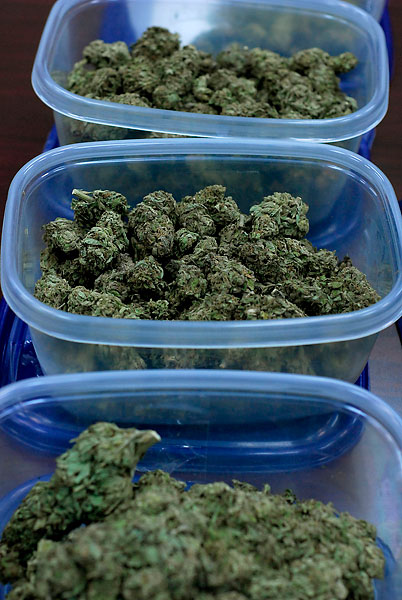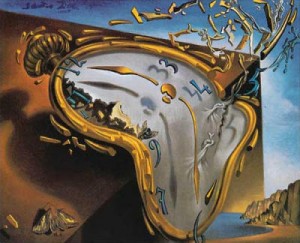Mr. Fletcher vs. Mr. Daubert: A Journey into the Surreal
By: Frederic Whitehurst, J.D., Ph.D.
Many a defense attorney has looked in amazement at the courtroom “identification” of Cannabis Sativa L. by a law enforcement officer sporting a gilded pot metal badge and a high school diploma who has written a report that would turn a ninth grade English teacher’s hair gray and deny that same officer a high school diploma. Obviously the awarding of a Basic Law Enforcement Training (BLET) diploma elevates such high school graduates to the doctoral level in botany, enabling them to conduct a visual leaf architectural analysis and the court accepted alchemy of the Duquenois Levine test to reach a conclusion that the green vegetable material in that little baggy can be identified as marijuana to the exclusion of all other plant material. On the face of it, this identification screams to our common senses as not being possible. However, we find that in State v. Fletcher, 92 N.C. App. 50, 373 S.E. 2d 681 (N.C. App. 1988), our courts in North Carolina are willing to accept this testimony as evidence. Though State v. Ward, 364 N.C. 133 (2010) began a foray into recognizing the ridiculousness of the legitimacy of visual identification of controlled substances in a world full of counterfeit materials, State v. Garnett, ___ N.C. App. ___, 706 S.E.2d 280 (2011) backed away from Ward, thus allowing an in-court identification of cannabis sativa to be admissible. This all flies in the face of a long list of scientific literature and even State v. Tate, 300 N.C. 180 (1980), which found that the then known list of materials causing false positives with this Duquenois chemical spot test rendered the test not scientifically reliable or admissible as an means of identifying marijuana. In North Carolina we are now given a new standard for admissibility of scientific/expert testimony in courts of law. Rule 702 has entered the modern era. As of October 1, 2011, the amendments to Chapter 8C, Rule 702(a) read:
If scientific, technical or other specialized knowledge will assist the trier-of-fact to understand the evidence or to determine a fact in issue, a witness qualified as an expert by knowledge, skill, experience, training, or education, may testify thereto in the form of an opinion, or otherwise, if all of the following apply:
1. The testimony is based upon sufficient facts or data.
2. The testimony is the product of reliable principles and methods.
3. The witness has applied the principles and methods reliably to the facts of the case.
So let us now considered this “expert identification” of Cannabis Sativa L. by a BLET “Ph.D. botanist”. The expert must be qualified by knowledge, skill, experience, training or education. The law enforcement officer who has seized green vegetable material on ten or ten thousand occasions is not testing his qualifications or his “identification protocol”. He is simply seizing green vegetable material. Let’s consider the data that he has at the point of seizure.
The most prevalent form of seized and “identified as marijuana” material that we see is the material that has been finely crushed. What this means is that the law enforcement officer has seized a material which no longer has the macroscopic characteristics of the original plant (if indeed the seized material is plant material). But is it plant material? What is a plant and therefore vegetable material? Ask any dictionary. The American Heritage Dictionary defines a plant as “an organism of the vegetable kingdom, characteristically having cellulose cell walls, growing by synthesis of inorganic substances and lacking locomotion.” Goodness gracious, look it up. We all have dictionaries. And at that point we are seeing the flaw in the law enforcement officer’s qualifications. We ask, “Do you carry a microscope?” I’m not being ridiculous. A plant material (vegetable material) contains cells. Without a microscope one can not see those cells. So what experience does the officer have in conducting microscopic analysis? If none, then we must conclude that he does not have the requisite experience, training or skill needed to qualify as an expert in identifying plant material. Of course he can opine that the material he has seized lacks locomotion but so does road kill, so do rocks, so does a fake plastic plant. At a recent CLE seminar at which I taught, before my lecture I went out into the hotel where the CLE was held and broke off a small part of a decorative plastic potted plant. During the lecture I pulled this purloined “vegetable” matter from my coat pocket and handed it to the man in front of me and asked him what kind of plant it was. He advised that he knew it was a plant but did not know what kind of plant.

Let us get beyond the issue of whether the law enforcement officer carries a microscope as well as or instead of a gun. Let’s suppose that the officer in Garnett actually had a microscope on the witness stand and was able to see cell structure. Let’s give him the benefit of the doubt that he was not willing to give to our client. What would be the next step in this “identification” that is being conducted by the officer who is qualified by training, skill, education, etc.. We know that marijuana is a seed bearing plant. What did the officer see that indicated to him that this seized material was a seed bearing plant? Did he see any seeds at all? And if he did see objects that he thought were seed what qualifications does he have to recognize these objects as seeds. Has he conducted any research what-so-ever in the visual identification of marijuana seeds? The answer to that question is absolutely not. In fact there was no research in this area at all anywhere until about 2009 when Jenna Fussell, John Thornton and Frederic Whitehurst authored “The Visual Characterization and Identification of Cannabis sativa (Marijuana) Seeds published in the Journal of Forensic Identification 59 (5) 2009. So that leaves out the seeds issue and the officer can not testify that he has skill in identifying marijuana seeds. Very likely at this point we have an officer on the stand or at the point of seizure who has no experience or training or skill at “identifying” marijuana based upon the characteristics we shall call “plant” and “seeds.”

Let’s give the officer the benefit of the doubt that he did not give our clients. Let’s assume that he has conducted research and has the skills needed to identify a material as a plant based upon an accepted definition of the word “plant” and he has conducted the research and has the skills needed to identify the “seeds” that he sees as seeds from a marijuana plant. So next we reach the issue of flowers. Marijuana has flowers. Those of us who have been involved in legal cases where “marijuana” was seized have a common sense that marijuana has flowers. So we must ask the officer what experience and skill he has in “identifying” marijuana flowers. And not necessarily even the flowers on the growing plant but the flowers in the end product, that which on the street is recognized as the quality product because of its high tetrahydrocannabinol (THC) content. Who wants leaves and stems and stalks when one can purchase the bud/flower? But what is a flower? Can the officer identify the parts of a flower? What skill and training has he got to make him qualified to render an opinion that the material he is observing is even flower material much less marijuana flower material? “I just know it when I see it” is a great response but the obvious query is “Just what is it that you are seeing and how does that compare with the structure of the marijuana flower?” In “The Structure of Economic Plants”, Professor Herman Hayward tells us that “Hemp is dioecious and the number of staminate and pistillate plants is relatively constant under normal conditions.” And describing the staminate inflorescence and flower, Hayward tells us that ”the flowers develop in small, drooping, branched panicles, which arise in the axils of foliage leaves. The flowers of the panicle may occur singly on slender pedicels or in groups, and usually the terminal branches bear three flowers, a median one and two laterals which are subtended by bracts or stipules. The individual flowers are petalous with a deeply parted calyx having five greenish-yellow or red lobes that are widespread at maturity. There are five stamens, and the anthers are suspended from long thread-like filaments.” This, of course describes the flowers in their growing state, not in the state that one finds them on the street. The experienced law enforcement officer who has the skill, training, knowledge, etc. to qualify him as an expert who can offer an opinion that what he is looking at is marijuana flower, of course knows all of this and more and will be able to describe all of those parts that he is seeing that fit Hayward’s very clear description of growing marijuana plant flowers. If not then he does not have the requisite experience, training or skill. And if the officer can recognize all the parts of marijuana flower are present within the material he has seized and is calling marijuana, we must still ask if he has the requisite experience and training to not only recognize the parts but tell us that no other plants has such parts, not no other plant he has seen, but no other plant. He has been asked to identify the plant as marijuana, meaning that he is saying that the plant is marijuana to the exclusion of all other plants or at least a reasonable portion of the other plants on the planet.

But again, let’s give this officer the benefit of the doubt that he was not willing to extend to our clients and progress to the next level of inquiry about his skill and experience and training. Marijuana is a dicotyledon as opposed to being a monocotyledon. Does the officer know what this means? Surely with the proper training, skill and experience he does. In fact, if he remembers his ninth grade biology class he will realize what these terms mean. A cotyledon is the part of the plant that nourishes the embryonic plant until it can succeed on its own. In North Carolina, an agricultural state, all of us should know about opening up peanuts or lima beans. Two halves, fat leaves, inside of which exists a tiny little plant. (If you haven’t opened up a lima bean you haven’t lived. Go do it now.) Those two halves are cotyledons and because there are two of them we call plants with two of them, dicotyledons. Plants such as corn have only one little fat leaf, one cotyledon, the kernel of corn, that feed the little corn plant until it grows into the stalk on which the corn is produced. So, assuming the officer remembers his ninth grade biology class, he will have the requisite knowledge and skill needed to recognize if this plant is a dicotyledon, which marijuana is. But how many other plants are there that are dicotyledons? Does he know this? Can he properly educate a trier-of-fact to the potential number of plants that might be mistaken for marijuana based on the characteristics we have considered thus far?
Please remember that what the officer seizes most often is crushed material, no longer having all the characteristics of the growing plant. During the preparation for distribution, the flowers are left whole but the leaves are crushed into very small pieces. A “leaf architectural analysis” is no longer possible. Go out into the woods right now or out into your yard. Pick leaves off a number of plants. Let them dry a bit and then crush them up. Ask yourself if you can then tell from which plant those crushed up leaves originated. You might be able to differentiate crush yard grass or corn leaves from oak leaves but can you differentiate live oak leaves from red oak leaves from maple? Can you differentiate oregano leaves from tea leaves just by looking at them? Does the officer have the skill, training and education to do this? Hickey in the Journal of Botany, 60(1): 17-33 (1973) describes for us this leaf architectural analysis. Has the officer the skill, knowledge or training in this area? Leaves are classified according to leaf orientation, organization, shape, margin, texture, gland position, petiole, types of venation, and elements of tooth architecture. When we follow Hicky we being to look at the form of leaf margin; we see classification concepts such as entire, lobed, toothed, crenate, erose, revolute or enrolled, sinuses, spacing and series. Does the officer know what these concepts even mean? But wait! These are generally not seized plants that we have in evidence but crushed up material. So how do we begin to conduct Hickey’s suggested leaf architectural analysis? What training, experience or skill can the officer testify to to be qualified in the “identification” of marijuana from a leaf architectural analysis when the leaves are no longer in their natural state? In his paper “Forensic Aspects of Cystolith Hairs of Cannabis and Other Plants”, Journal of AOAC (Vol. 52, No.1, 1969), George Nakamura noted that even with a microscopic analysis he could not differentiate 82 different seed bearing plants out of 31874 he considered. He never considered a leaf architectural analysis because, obviously once the leaves are crushed up into product for street sales, such an analysis would not be possible. So how can a law enforcement officer visually identify green vegetable material as marijuana even with a microscope?

The response this author has heard in the past has been that one need not be a botanist in order to understand botanical concepts. OK, but Rule of Evidence 702 now requires that
If scientific, technical or other specialized knowledge will assist the trier-of-fact to understand the evidence or to determine a fact in issue, a witness qualified as an expert by knowledge, skill, experience, training, or education, may testify thereto in the form of an opinion, or otherwise, if all of the following apply:
1. The testimony is based upon sufficient facts or data.
2. The testimony is the product of reliable principles and methods.
3. The witness has applied the principles and methods reliably to the facts of the case.
Cannabis Sativa L. is an extremely complex organism which shares many features in common with many other plants. We are informed by Ivan Ross in “Medicinal Plants of the World, Chemical Constituents, Traditional and Modern Medicinal Uses” Volume 3 that over 500 known chemical constituents have been isolated and identified in marijuana. We are informed by Robert Thorne in “How Many Specicies of Seed Plants Are There”, Taxon 51, August 2002, that there are conservatively 258,650 known seed bearing plants. If we refer to the Encyclopedia Britannica we see estimates of 200,000 to 500,000 known seed bearing plants. When we identify marijuana we are saying that the data we have collected is sufficient to identify the material to the exclusion of any other plant or at least to the exclusion of a reasonable number of other plants. We are saying that the combination of features we have observed are only seen in marijuana. Does the identifying officer have the skill, education, knowledge or training to be able to articulate why the features he is observing would not be observed in that combination in any other plant material? And has he collected sufficient data to determine the material he has identified as marijuana is in fact marijuana. In Garnett the officer simply looked at the green vegetable material and did not determine if it was a plant material in a reliable manner. The opinion does not address the protocol the officer followed in determining if the material was a seed bearing material, if the material was a flowering plant or a dicotyledon, if the officer conducted a leaf architectural analysis or an analysis of any potential flower material in the evidence. In the words of Rule 702, is it true that “The testimony is based upon sufficient facts or data?”, to say that this combination of features would be observed in no other plant. And what features are we talking about. Green vegetable material? Unique odor?
How does one determine if the odor the officer is detecting is unique to marijuana? Does the officer have the experience, training, skills or education to say that the odor that he is detecting (whatever that is) is unique to marijuana. The officer may very well testify that he has never smelled anything else that smells like marijuana. How does one test that statement? The officer’s olfactory senses can be tested but have they been tested? Is there sufficient data from the olfactory analysis from the officer that the court can determine the admissibility of the evidence or even the weight of the evidence? In other words, is the testimony the product of reliable principles and methods and did the officer properly apply those principles and methods to the facts of the case. It would be virtually impossible for the trial court to test the officer’s olfactory senses and I am not aware of any police agency that tests for olfactory senses in its officers. Flemming et. al. in “Topics in Heterocyclic Chemistry”, Volume 10, 1-42 (2007) inform us that there are 120 susquiterpenoid and terpenoid compounds which compose the materials which are detected as the “odor” of marijuana. Any Google search of sites that purport to sell marijuana or its seeds for production advertise their products according to effect on the body, appearance and odor. It is reasonable to believe that environmental impact will alter the qualitative and quantitative envelope of the chemical composition of Cannabis Sativa L.. One need only look at the results of the use of such products as Miracle Grow on a home garden to realize that environmental factors play a very big role in plant composition. The Court may very well be left with no way of determining if the odor detection part of the marijuana analysis protocol is reliable? And the Court would do well to ask this, “Why does or did the North Carolina Crime Lab ever conduct a marijuana analysis if an officer need only smell the green vegetable material to prove it is marijuana”? It defies logic.
D.W. Johnson and J.W. Gunn in Dangerous Drugs, Adulterants, Diluents and Deception in Street Samples” , Journal of Forensic Science, 1972 found that up to 20% of the alleged marijuana samples submitted to the US Department of Justice’s Bureau of Narcotics and Dangerous Drugs lab were not in fact marijuana. Though I have not found any more recent data describing the occurrence of counterfeit marijuana being submitted by law enforcement officers as marijuana to crime labs, North Carolina General Statutes accept that counterfeit controlled substances are in fact a very real problem and are deemed to be illegal. We must ask how many times law enforcement officers submit material they suspect of being marijuana to a crime lab and the material is found to not be marijuana. In other words, has anyone determined the error rate for an analysis of suspected marijuana conducted by a law enforcement officer visually and chemically analyzed marijuana or worse, simply visually determining the green vegetable material is marijuana.
In summary, Fletcher meets Daubert (or in North Caroline Rule of Evidence 702) and leaves us very only with questions, questions that should be answered before a North Carolina Court can accept an officer’s “identification” of marijuana simply by a visual or olfactory test. If a defendant wishes to stipulate that the material that was in his possession was marijuana then the question is closed. However, do we know even if defendants are capable of determining that they have not been sold counterfeit material? Remember that there is a new test of reliability now in North Carolina which must be satisfied before scientific, technical or other specialized knowledge will be admitted as evidence.
If scientific, technical or other specialized knowledge will assist the trier-of-fact to understand the evidence or to determine a fact in issue, a witness qualified as an expert by knowledge, skill, experience, training, or education, may testify thereto in the form of an opinion, or otherwise, if all of the following apply:
1. The testimony is based upon sufficient facts or data.
2. The testimony is the product of reliable principles and methods.
3. The witness has applied the principles and methods reliably to the facts of the case.”
Street and/or courtroom “identification” of green vegetable material being marijuana in no way meets that test.



